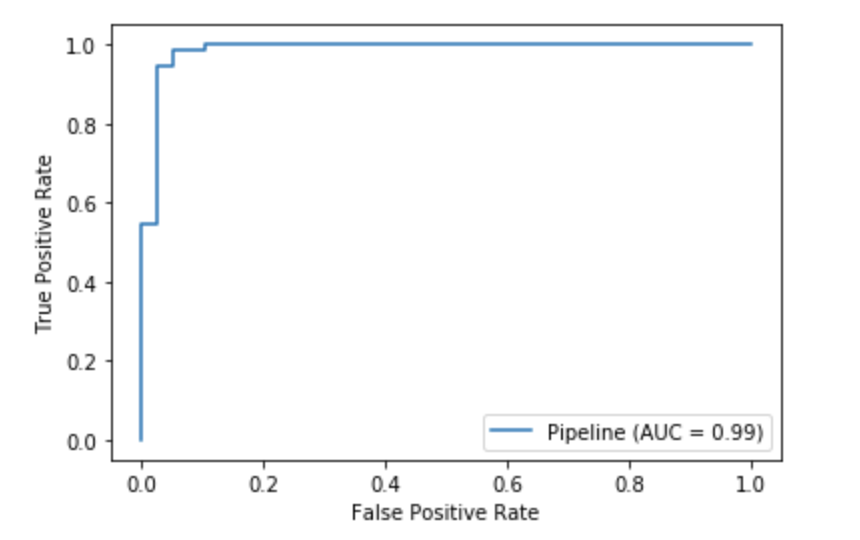7.0 KiB
Exercise 0: Environment and libraries
The exercise is validated is all questions of the exercise are validated.
Activate the virtual environment. If you used conda run conda activate your_env.
Run python --version.
Does it print Python 3.x? x >= 8
Does import jupyter, import numpy, import pandas, import matplotlib and import sklearn run without any error?
Exercise 1: MSE Scikit-learn
The goal of this exercise is to learn to use sklearn.metrics to compute the mean squared error (MSE).
- Compute the MSE using
sklearn.metricsony_trueandy_predbelow:
y_true = [91, 51, 2.5, 2, -5]
y_pred = [90, 48, 2, 2, -4]
Exercise 2: Accuracy Scikit-learn
The goal of this exercise is to learn to use sklearn.metrics to compute the accuracy.
- Compute the accuracy using
sklearn.metricsony_trueandy_predbelow:
y_pred = [0, 1, 0, 1, 0, 1, 0]
y_true = [0, 0, 1, 1, 1, 1, 0]
Exercise 3: Regression
The exercise is validated is all questions of the exercise are validated
The question 1 is validated if the predictions on the train set and test set are:
#10 first values Train
array([1.54505951, 2.21338527, 2.2636205 , 3.3258957 , 1.51710076,
1.63209319, 2.9265211 , 0.78080924, 1.21968217, 0.72656239])
#10 first values Test
array([ 1.82212706, 1.98357668, 0.80547979, -0.19259114, 1.76072418,
3.27855815, 2.12056804, 1.96099917, 2.38239663, 1.21005304])
The question 2 is validated if the results match this output:
r2 on the train set: 0.3552292936915783
MAE on the train set: 0.5300159371615256
MSE on the train set: 0.5210784446797679
r2 on the test set: 0.30265471284464673
MAE on the test set: 0.5454023699809112
MSE on the test set: 0.5537420654727396
This result shows that the model has slightly better results on the train set than the test set. That's frequent since it is easier to get a better grade on an exam we studied than an exam that is different from what was prepared. However, the results are not good: r2 ~ 0.3. Fitting non linear models as the Random Forest on this data may improve the results. That's the goal of the exercise 5.
Exercise 4: Classification
The exercise is validated is all questions of the exercise are validated
The question 1 is validated if the predictions on the train set and test set are:
# 10 first values Train
array([1, 0, 1, 1, 1, 0, 0, 1, 1, 0])
# 10 first values Test
array([1, 1, 0, 0, 0, 1, 1, 1, 0, 0])
The question 2 is validated if the results match this output:
F1 on the train set: 0.9911504424778761
Accuracy on the train set: 0.989010989010989
Recall on the train set: 0.9929078014184397
Precision on the train set: 0.9893992932862191
ROC_AUC on the train set: 0.9990161111794368
F1 on the test set: 0.9801324503311258
Accuracy on the test set: 0.9736842105263158
Recall on the test set: 0.9866666666666667
Precision on the test set: 0.9736842105263158
ROC_AUC on the test set: 0.9863247863247864
The question 2 is validated if the results match the confusion matrix on the test set should be:
array([[37, 2],
[ 1, 74]])
The question 3 is validated if the ROC AUC plot looks like the plot below:
Having a 99% ROC AUC is not usual. The data set we used is easy to classify. On real data sets, always check if there's any leakage while having such a high ROC AUC score.
Exercise 5: Machine Learning models
The question is validated if the scores outputted are close to the scores below. Some of the algorithms use random steps (random sampling used by the RandomForest). I used random_state = 43 for the Random Forest, the Decision Tree and the Gradient Boosting.
# Linear regression
TRAIN
r2 on the train set: 0.34823544284172625
MAE on the train set: 0.533092001261455
MSE on the train set: 0.5273648371379568
TEST
r2 on the test set: 0.3551785428138914
MAE on the test set: 0.5196420310323713
MSE on the test set: 0.49761195027083804
# SVM
TRAIN
r2 on the train set: 0.6462366150965996
MAE on the train set: 0.38356451633259875
MSE on the train set: 0.33464478671339165
TEST
r2 on the test set: 0.6162644671183826
MAE on the test set: 0.3897680598426786
MSE on the test set: 0.3477101776543003
# Decision Tree
TRAIN
r2 on the train set: 0.9999999999999488
MAE on the train set: 1.3685733933909677e-08
MSE on the train set: 6.842866883530944e-14
TEST
r2 on the test set: 0.6263651902480918
MAE on the test set: 0.4383758696244002
MSE on the test set: 0.4727017198871596
# Random Forest
TRAIN
r2 on the train set: 0.9705418471542886
MAE on the train set: 0.11983836612191189
MSE on the train set: 0.034538356420577995
TEST
r2 on the test set: 0.7504673649554309
MAE on the test set: 0.31889891600404635
MSE on the test set: 0.24096164834441108
# Gradient Boosting
TRAIN
r2 on the train set: 0.7395782392433273
MAE on the train set: 0.35656543036682264
MSE on the train set: 0.26167490389525294
TEST
r2 on the test set: 0.7157456298013534
MAE on the test set: 0.36455447680396397
MSE on the test set: 0.27058170064218096
It is important to notice that the Decision Tree overfits very easily. It learns easily the training data but is not able to extrapolate on the test set. This algorithm is not used a lot because of its overfitting ability.
However, Random Forest and Gradient Boosting propose a solid approach to correct the overfitting (in that case the parameters max_depth is set to None that is why the Random Forest overfits the data). These two algorithms are used intensively in Machine Learning Projects.
Exercise 6: Grid Search
The exercice is validated is all questions of the exercice are validated
The question 1 is validated if the code that runs the gridsearch is (the parameters may change):
parameters = {'n_estimators':[10, 50, 75],
'max_depth':[3,5,7],
'min_samples_leaf': [10,20,30]}
rf = RandomForestRegressor()
gridsearch = GridSearchCV(rf,
parameters,
cv = [(np.arange(18576), np.arange(18576,20640))],
n_jobs=-1)
gridsearch.fit(X, y)
The question 2 is validated if the function is:
def select_model_verbose(gs):
return gs.best_estimator_, gs.best_params_, gs.best_score_
In my case, the gridsearch parameters are not interesting. Even if I reduced the over-fitting of the Random Forest, the score on the test is lower than the score on the test returned by the Gradient Boosting in the previous exercise without optimal parameters search.
The question 3 is validated if the code used is:
model, best_params, best_score = select_model_verbose(gridsearch)
model.predict(new_point)
